Mmmm… The white rabbit has stricken again.
That’s the thing, it’s hard to spend most of your free time attending the Setouchi Triennale and to blog about it at the same time. Add to that a new job (that I love) and a new schedule to adjust to, and there you have it; a blog going without posts for longer than it should.
Well, here we are, and today, I’m bringing you to Shodoshima again, but this time we’re going to visit the western part of the island, starting with Tonosho.
As soon as we got off the ferry, we got on the bus to Honmachi, downtown Tonosho if you like, to rediscover a beloved installation that I had dearly missed. I’m talking about Oscar Oiwa’s Oiwa Island 2!
While the artwork is new to Shodoshima, it actually dates from 2013 when it was exhibited on Ibukijima, but for one month only… One month of scorching heat… Not enough people got to see it, and those who did, myself included, didn’t appreciate it as much as they should have because of aforementioned heat. I had written about it back then, if you’re interested.
So it was with great pleasure that I learned Oiwa Island 2 was back, and this time for the whole duration of the Triennale.
Oscar did add a few more things to it, but overall, it’s still the same amazing structure. A very large inflatable space, in which you enter outdoors, unless it’s the opposite, you decide. And because you end up inside a drawing, the result is this unreal tiny universe that so beautiful and so hard to describe. Like most installations, it needs to be experienced, pictures can’t totally do it justice.
Unfortunately, we couldn’t stay on (in?) Oiwa Island 2 forever, even though it was very tempting. I’m sure I’ll go back before the end of the Triennale.
Next, we went to see Tonosho’s Post Office that has been included in the Triennale this year. As you can see, it doesn’t exactly look like every other post office, but it’s nothing too special either.
Then, we headed to Maze Town – Phantasmagoric Alleys by MeiPAM.
A few explanations before going any further.
MeiPAM is an art gallery based in Tonosho, and I have the feeling that they are one of the cultural leaders and “engines” of the island. And it seems to be working well, every time I go to Tonosho, it seems that they’ve expanded to more locations and exhibit spaces. There are five now, if I’m correct.
Honmachi is the historical part of Tonosho, it is nicknamed “maze town” because its street layout is very confusing and intricate, in a way that is not very different from European medieval villages, and as such, quite different from the Chinese-inspired grid layout that one tends to find in old cities in Japan. There’s no apparent logic and it’s pretty easy to get lost. And it is said that this is deliberate, it was a way to protect the people of Tonosho against pirates who roamed the Seto Inland Sea back in the days and who would raid the town occasionally. Pirates attacking the town would get confused or even lost in those streets and meanwhile, the locals could flee to safety or organize their defense.
In 2013, inspired by the convoluted nature of Honmachi’s streets, the artists from MeiPAM had the idea to turn the area into a real “maze town”. It started with one building. This is the entrance, where an old tobacco shop used to stand.
I’m not going to spoil what’s inside, you’ll have to find out by yourselves. The surprise effect being an important part of the experience.
If I understood correctly, the idea was to expand from the building into other nearby unused buildings, but it didn’t exactly work out (while the idea is awesome, it must be quite impractical indeed). So instead, they turned another building (formerly known as MeiPAM 3) into another very different labyrinth. Here is what it looks like from the outside, I’ll let you imagine what it’s like inside (It’s forbidden to take pictures in both locations – and while that makes sense for the original site, I’m not too sure what’s the rationale for this one, as the surprise effect is kind of void as soon as you approach the building):
Of course, we also took the opportunity for a small stroll inside Honmachi (we didn’t get lost, I’m starting to know my way through it):
Saiko-ji, the Shodoshima pilgrimage’s 58th temple! What? You didn’t know that Shodoshima had its own 88 temples pilgrimage?
Next, we returned to Tonosho’s port to take another bus, but before that, we stopped at the ferry terminal that has become an exhibit hall during the festival.
It took me a while to get the joke in the name… You need to read it in “katakana English”: “A-to-no-sho-terminal”!
Two artworks can be found there. We haven’t been to the one on the second floor yet, but it has to do with fashion. I’ll tell you about it in a few months, when I’ve seen it. On the first floor, a very fun installation by Atelier Omoya.
Well, the picture won’t tell nor show much. How about this video? (and big thanks to my daughter for helping with the demo – not that it was a burden for her)
After this musical break, we hopped on the bus to go to a place that is well-known by Setouchi Triennale’s regulars, as well as long time readers of the blog, I’m talking about the valley of Hitoyama and Nakayama, two villages that are hidden in the heart of Shodoshima and that have been hosting art from the Setouchi Triennale since its very beginnings in 2010, including some of the most popular ones (but we’ll have to wait until the Fall to see Straw Art again).
What I did manage to see again was Nobuho Nagasawa’s Cradle of the Sea that has been renamed Voyage through the Void, but that remains a beautiful and soothing space. Unfortunately, no pictures can be taken there (without a flash, they’d be bad, and flashes would damage the atmosphere of the space).
Next, we headed to Shishigaki Island, by Masato Saito. Some new elements have been added to the place, but when we went, those additions weren’t finished yet. With all due respect to him – I’ve never met him – I’m starting to wonder whether Mr. Saito is a big procrastinator or something (he may also be very busy with many other things, who knows?) Back in 2013, during Bengal Island, he was one of the artists presenting a project there too, except he was the only one whom I’ve never seen on-site, whose work never seemed to progress that much (don’t get me wrong, it did, just very slowly), and I don’t think I’ve seen the final result back then (and he wasn’t there for the grand finale where everybody was there, everybody).
And there too. The additions to the artworks still were basically a construction site.
Now, I don’t know Mr. Saito, I don’t know the circumstances, maybe he has some very good reasons for that, and I shouldn’t judge.
We’ll see again in a few months what it looks like. In the meantime, let’s head to Nakayama through that lovely path in the middle of the rice fields, traditional kabuki theaters and more.
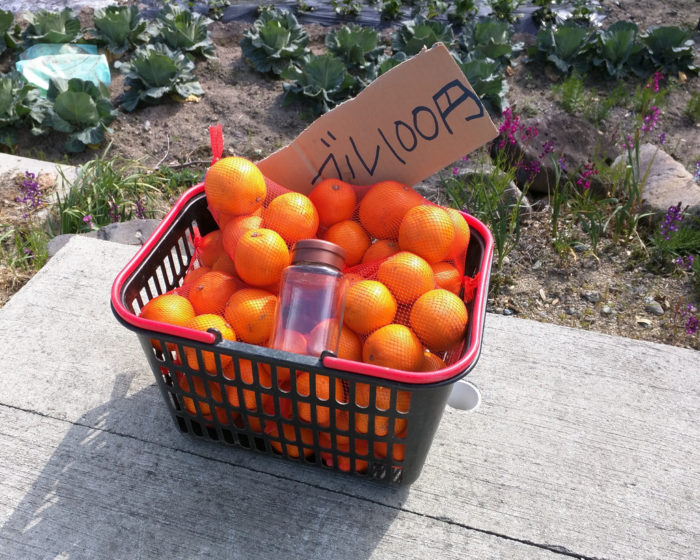
Right outside of Hitoyama, an old man briefly talked with us. He wanted to guide us, but we gently explained that we knew the way, and I’m pretty sure that’s the same guy we encountered roughly in the same spot three years earlier, except that back then, he gave us some oranges. Maybe he’s the one who’s selling them with this “self-service stand” on the side of the road now.
A few seconds after taking this picture, as we were leaving Hitoyama’s kabuki theater and started walking towards Nakayama in the countryside, a small car approached on the very narrow road. We stopped to let it pass by, but it stopped right next to us. The driver, a local middle-aged woman, probably thought that we had missed the bus, or that we were lost. She asked the young man who was sitting next to her in the car, to clean up the back seat (full of vegetables and whatnot) so that she could give us a ride to Nakayama. We didn’t tell her that we simply wanted to walk in the countryside a little bit, as I know the area to be beautiful; we didn’t want to be ungrateful. I have for habit and rule to never abuse people’s kindness, but to never turn it down either, even more so in Kagawa where some of the nicest people I have ever met live.
And, all in all, it was a very good idea, the time we saved allowed us to see one extra work of art at the end of the day that we hadn’t planned to see, thinking we wouldn’t have the time. But before that, we arrived in the middle to the famous terraced rice fields of Nakayama, where Wang Wen Chih‘s third incarnation of his giant bamboo house was waiting for us. Six years after House of Shodoshima, three years after Light of Shodoshima, let me introduce you to Dream of Olive:
I’m not going to lie, I’m a little disappointed by this 2016 version. Only a little, mostly because I find the overall external look a bit too simple, almost simplistic, especially compared to the previous iterations of the work. Now, don’t get me wrong, I’m being a little picky here, this Dream of Olive remains quite amazing, and even if the exterior is a little less impressive, the interior is still this almost unreal and magical space that one doesn’t want to leave once inside.
As I mentioned a few lines above, our short car ride allowed us to take an earlier bus compared to the one that we had planned to take, and instead of returning to Tonosho, we went to Ikeda where the only artwork of that area was waiting for us.
Actually I wonder if many people go visit this work of art. Not only there isn’t any other artwork in the Ikeda area, but this particular artwork demands a 10-15 minutes walk, parts of it on sand, parts that are sometimes inaccessible during high tide. However, the artwork seems to be permanent. Strange location for a permanent artwork, even though I noticed the beginning of some major construction in the back, so maybe it won’t stay isolated. The construction site could be an array of solar panels, though, they are becoming quite common on Shodoshima.
How about the artwork?
It’s called Someone’s Coming! and it was made by Pors & Rao.
When you get there, you enter a small building. Inside, the walls are of an ecru color, they have a maze-like feeling to them. On these walls, paintings. They are all ecru too, not color, no drawing. First, as you walk around the room, you are not sure what’s the deal; it can’t only be those paintings, can it?
Unfortunately, I should have used my video camera instead of simply taking pictures. As we walked, we kinda started feeling a presence, something at the very limit of our field of vision.
Then, we got it:
I’ll try to go again one of those days and bring you a short video back, it’ll be better than those pictures. A very fun and a bit unsettling experience. One really feels that someone is there, but every time you almost see them, they suddenly disappear. A ghost?
Nearby, on the beach, a couple. She’s from India, he’s European. I quickly understood that they were the artists, but I was surprised that they were spending their day(s) there, far from everything. Maybe it was a day when they had decided to meet visitors, and were just spending some time together in that beautiful setting before going to their hotel? At that moment, the place was deserted, only us, them, and the Koebi volunteer. I wanted to talk to them, but I felt that they probably didn’t want to be bothered by a stranger at that moment. I may try to reach them by e-mail and try to interview them before the end of the Triennale. We’ll see…
A little later we returned to Tonosho to spend the night.
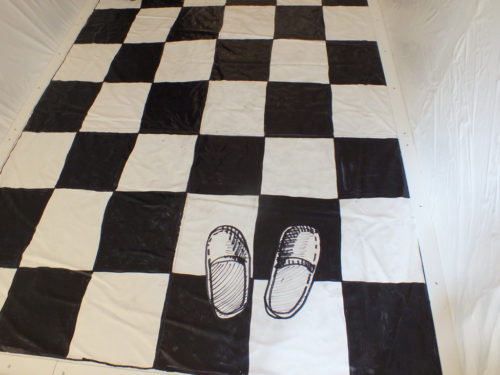
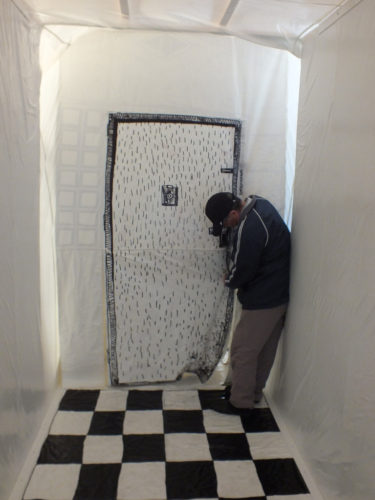
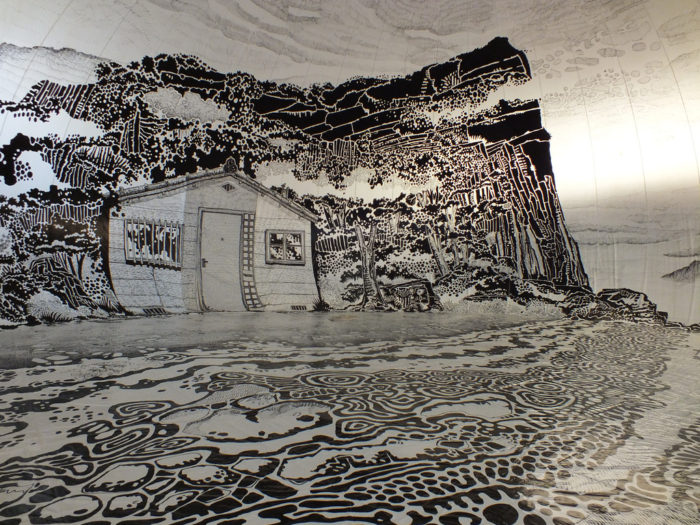
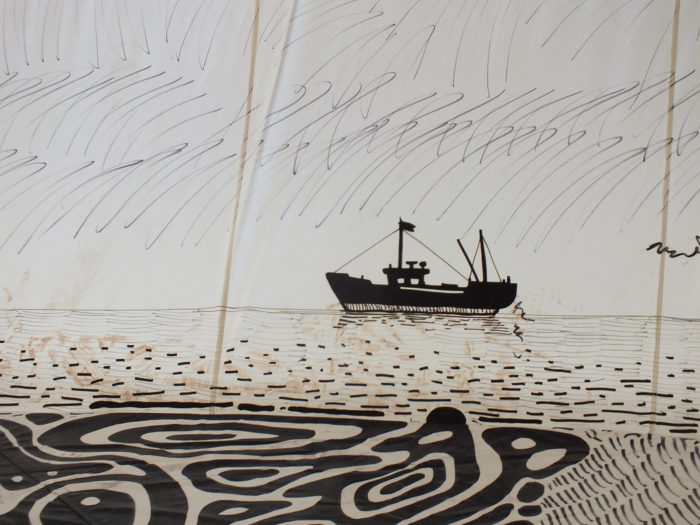
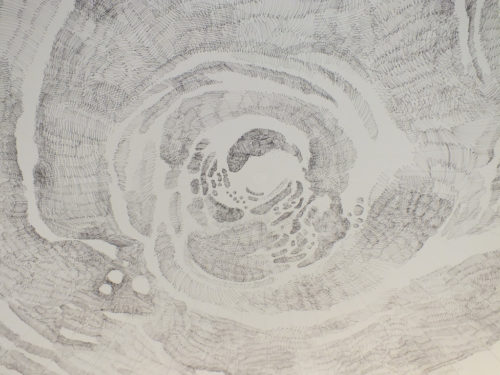
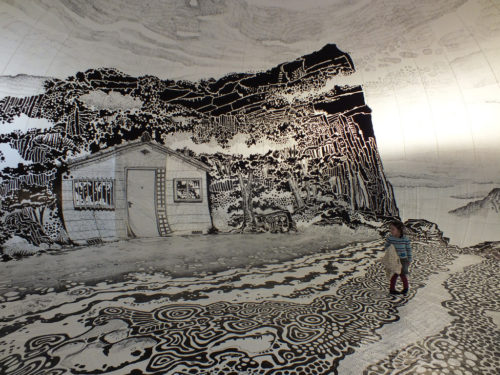
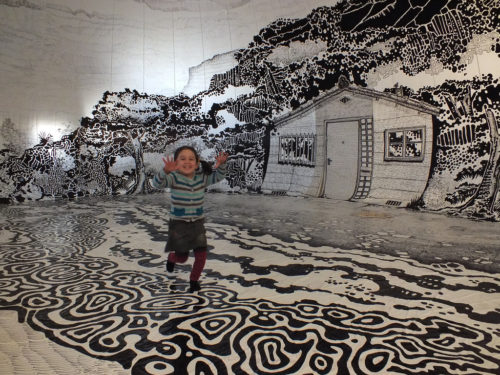
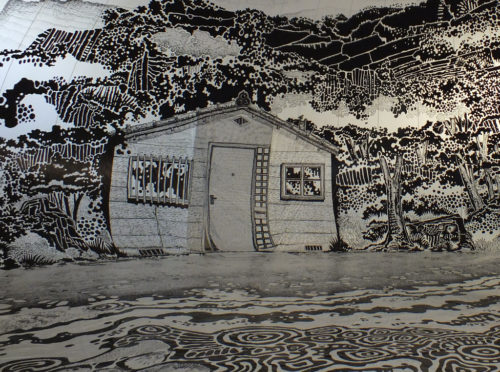
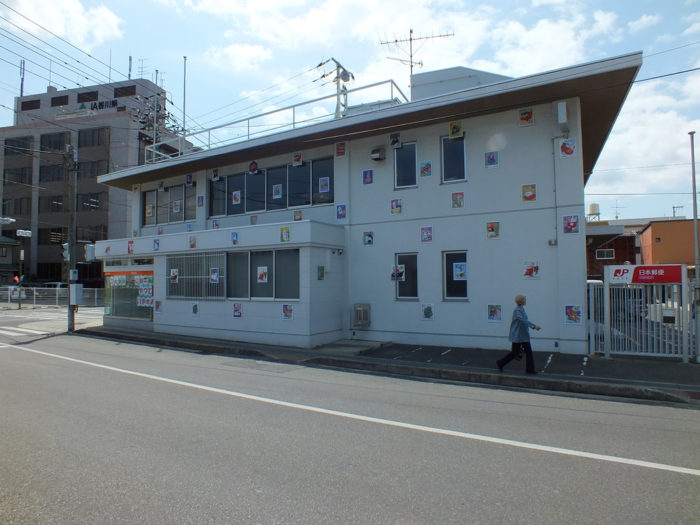
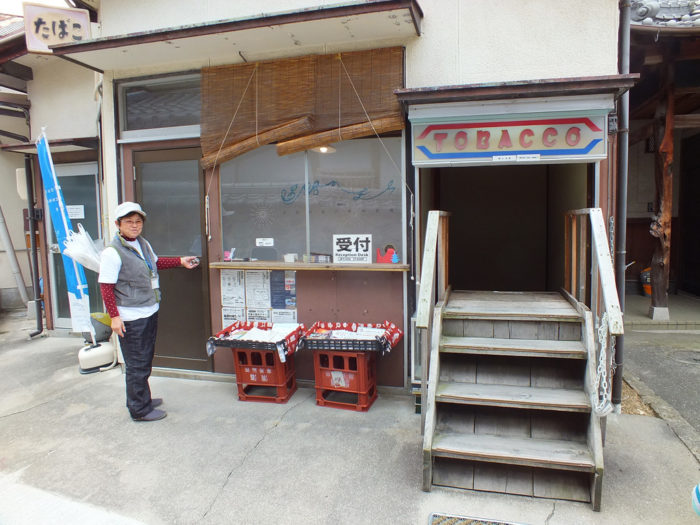
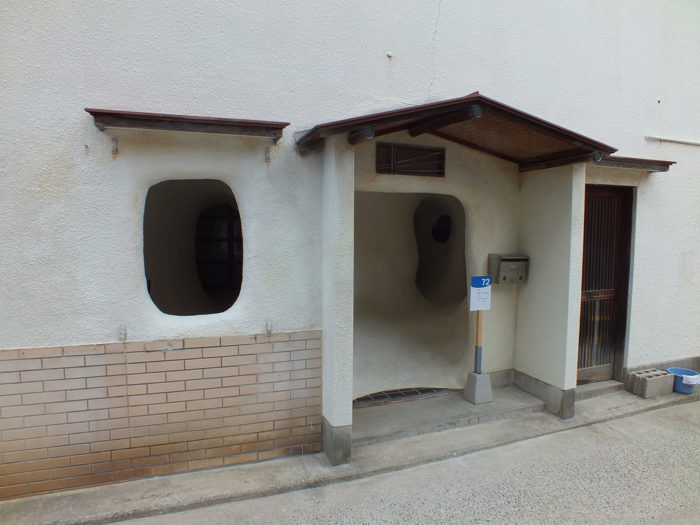
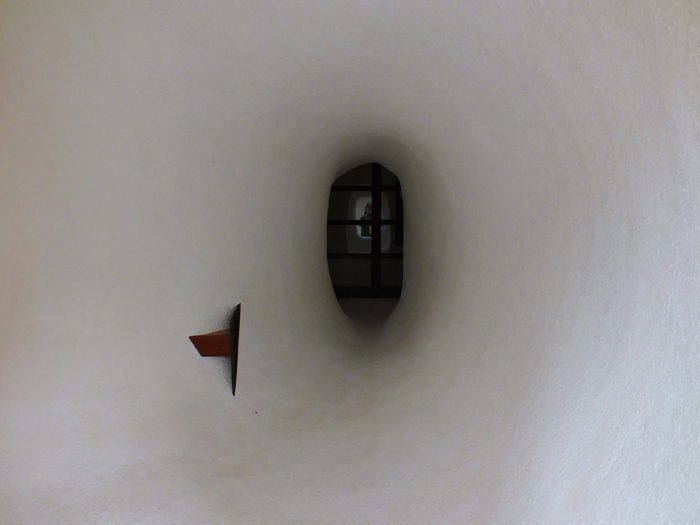
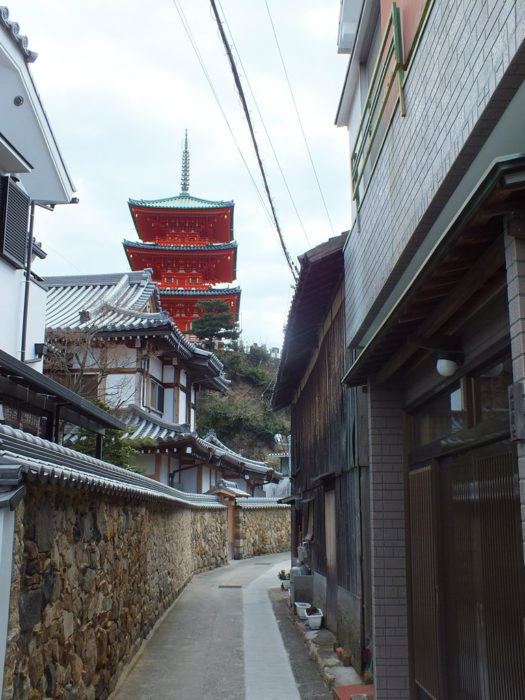
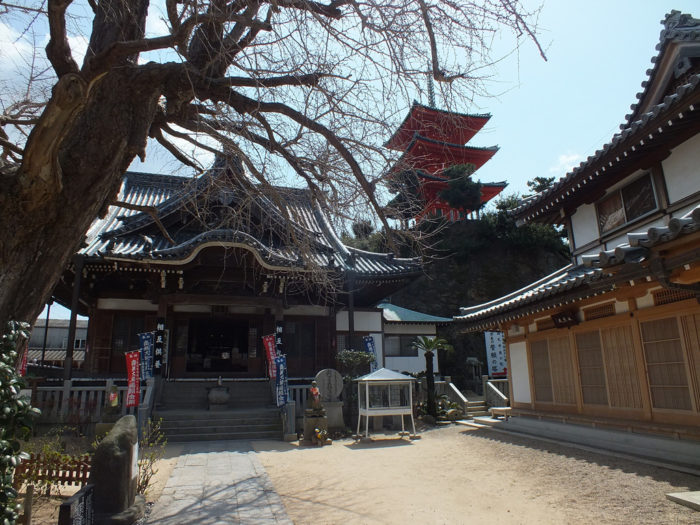
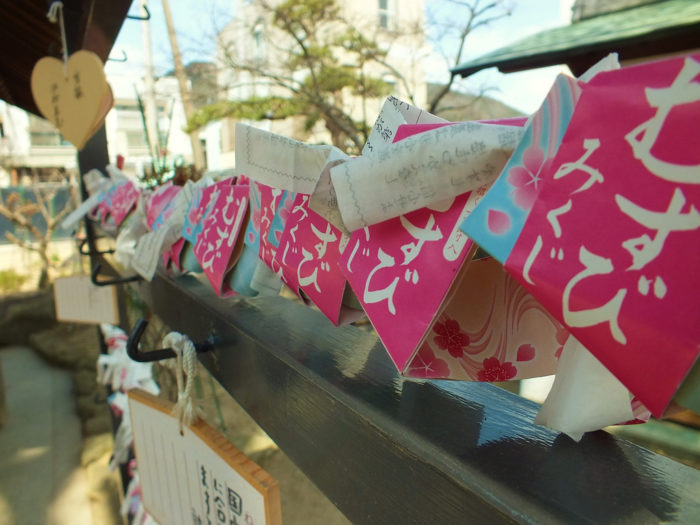
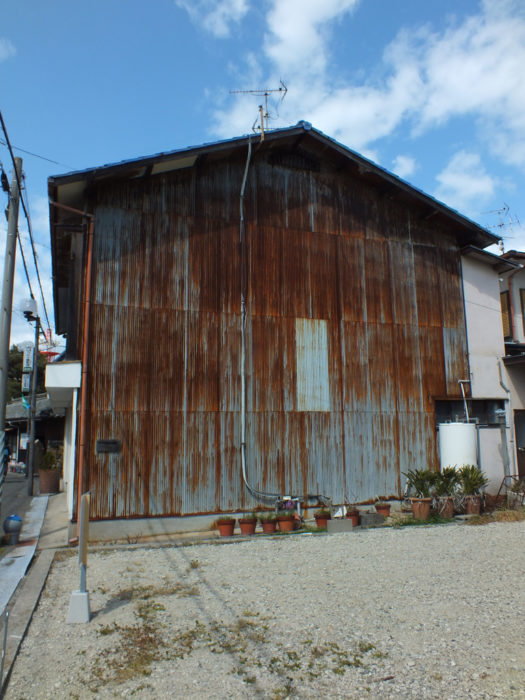

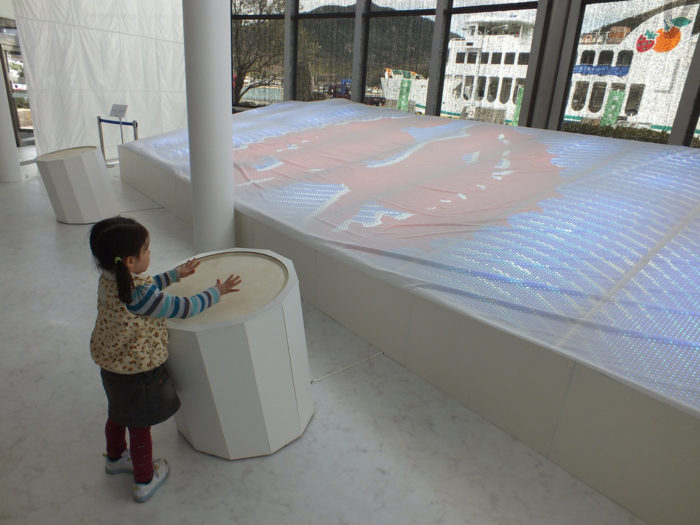
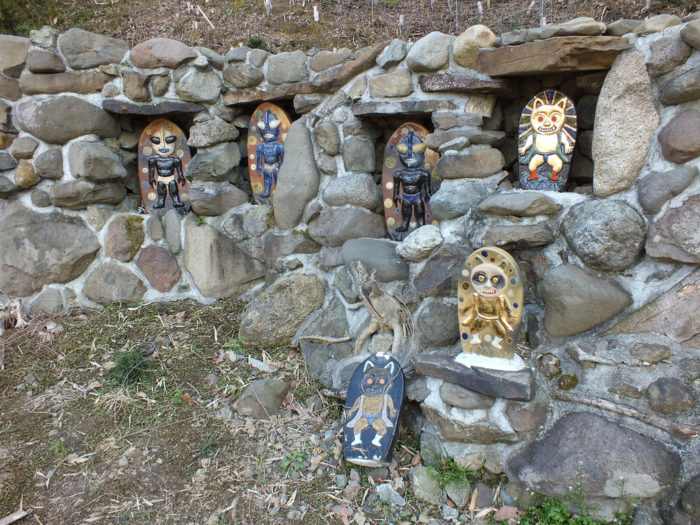
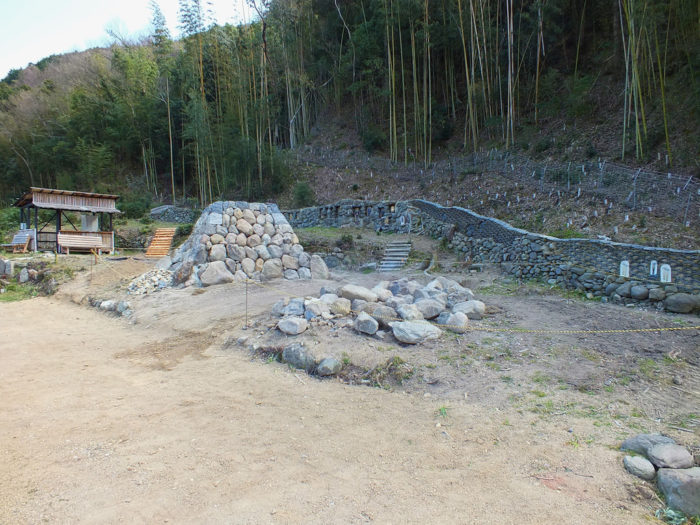
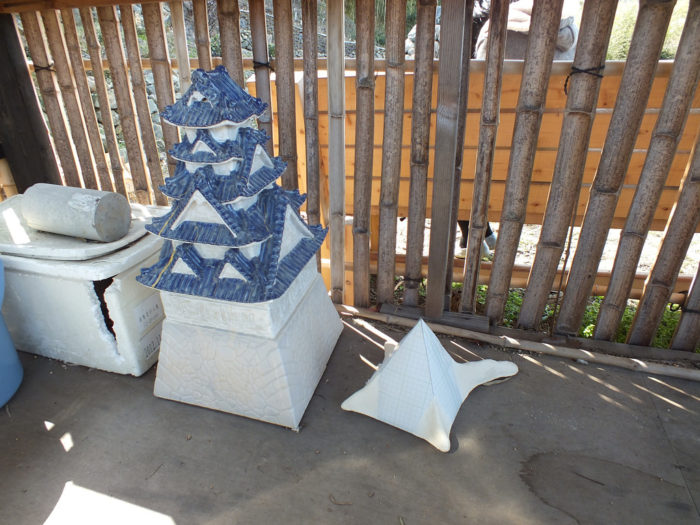
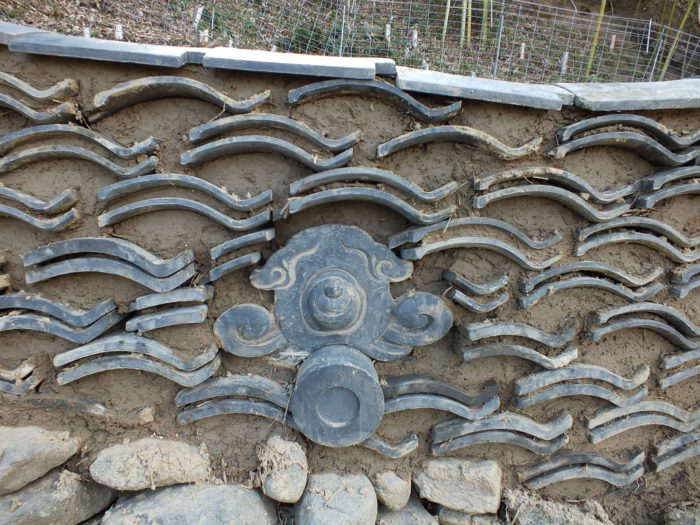
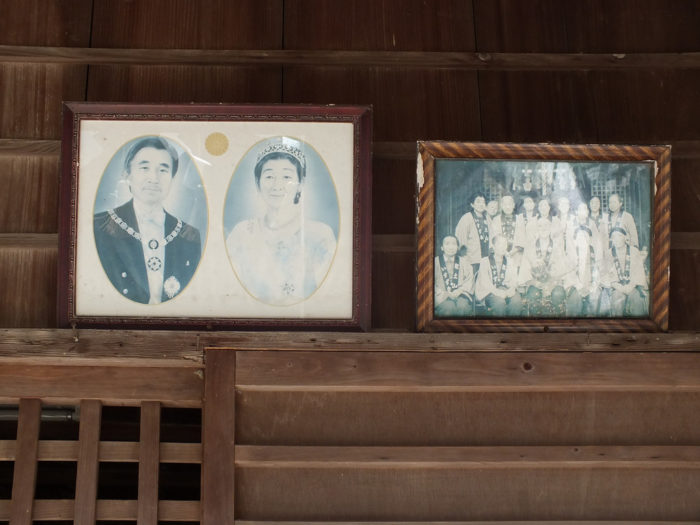
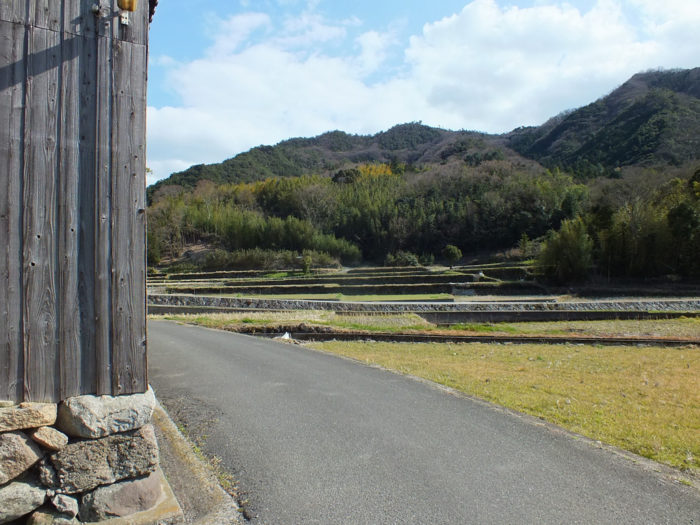
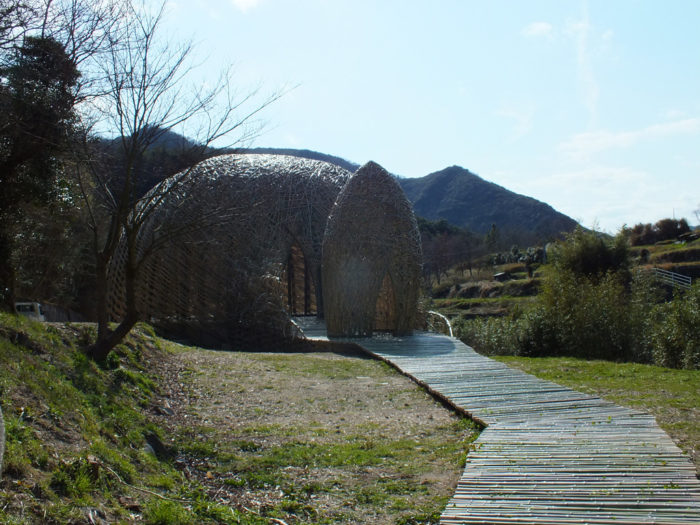
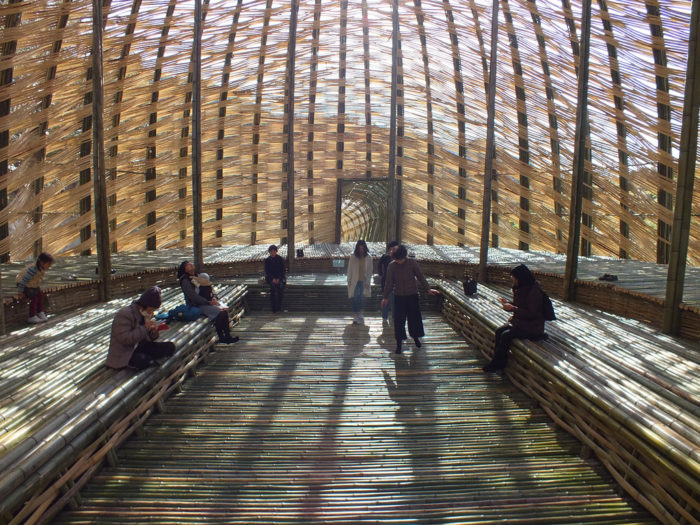
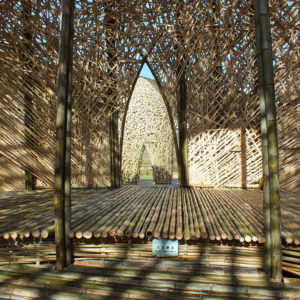
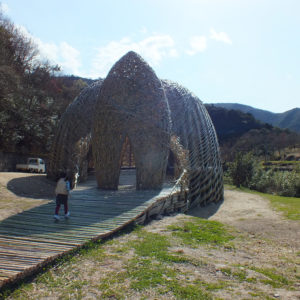
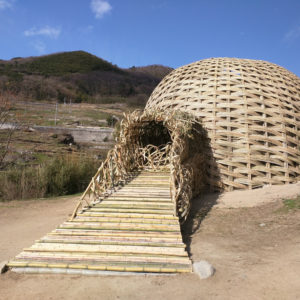
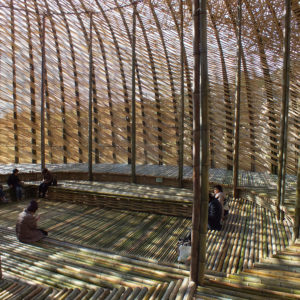
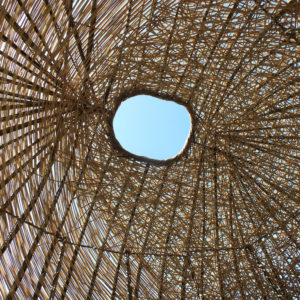
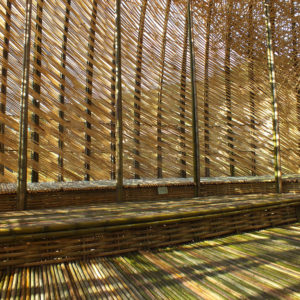
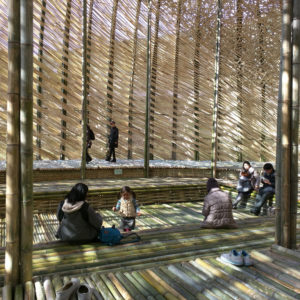
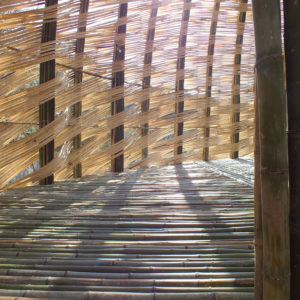
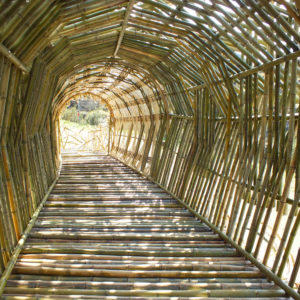
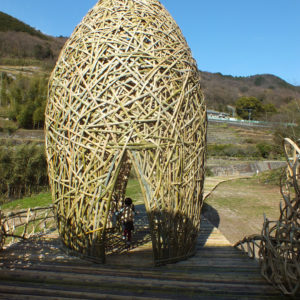
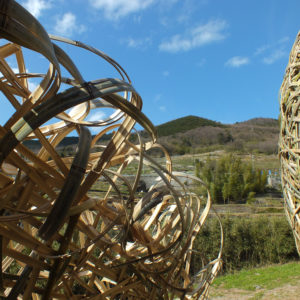
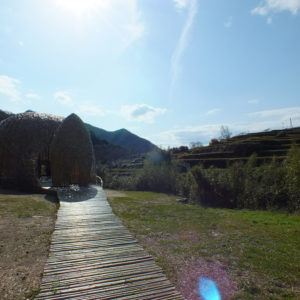
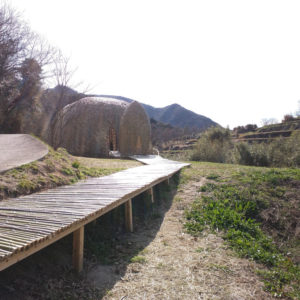
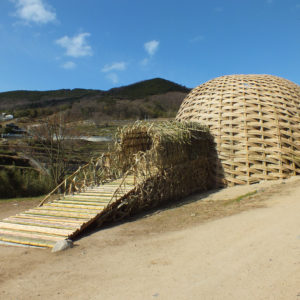
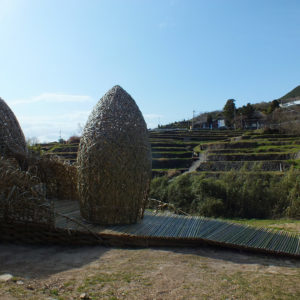
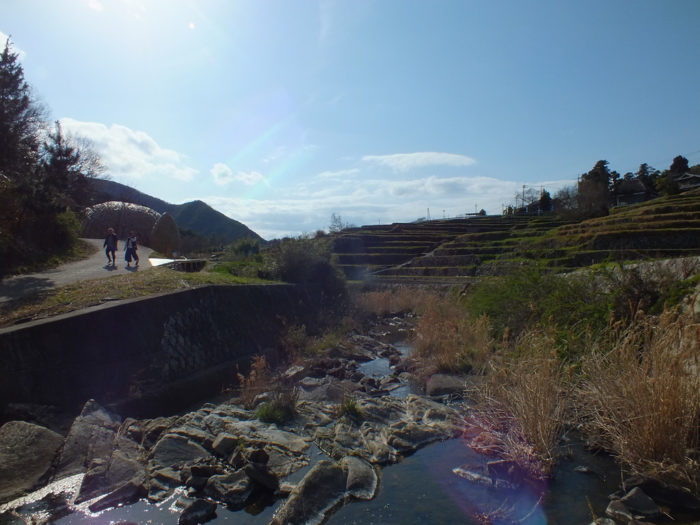
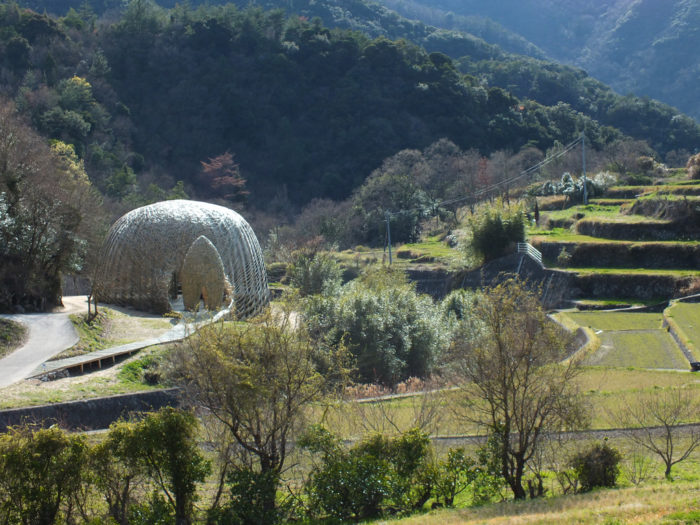
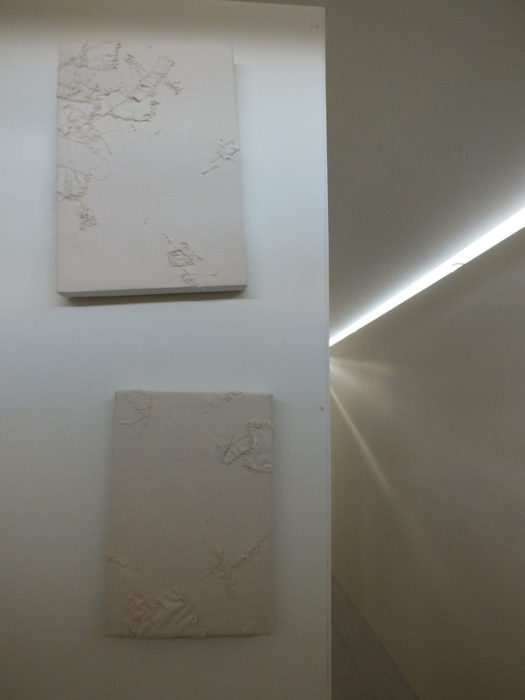
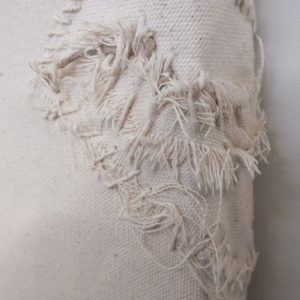
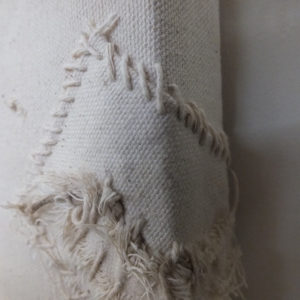
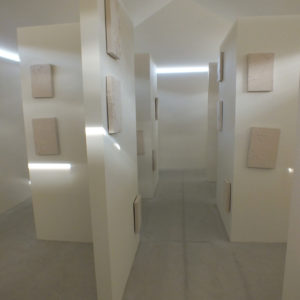
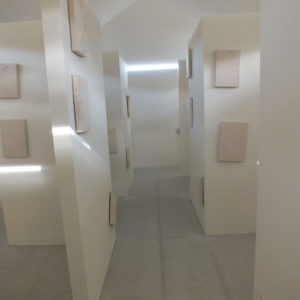
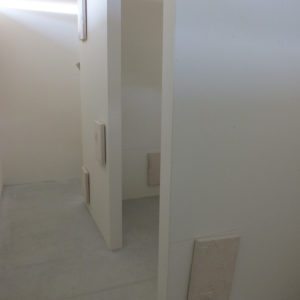
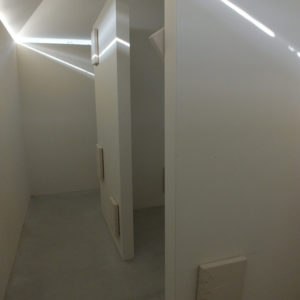
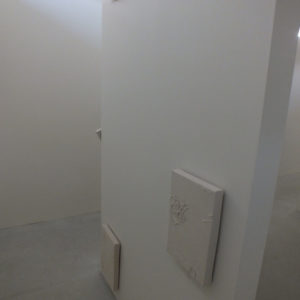
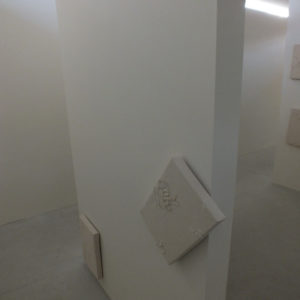
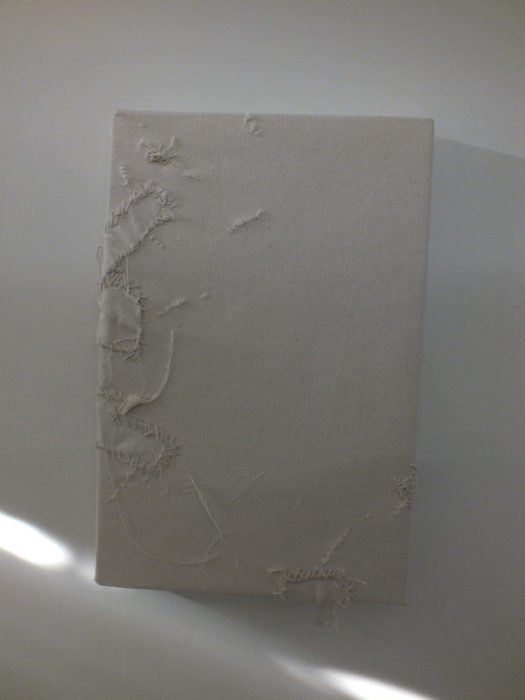
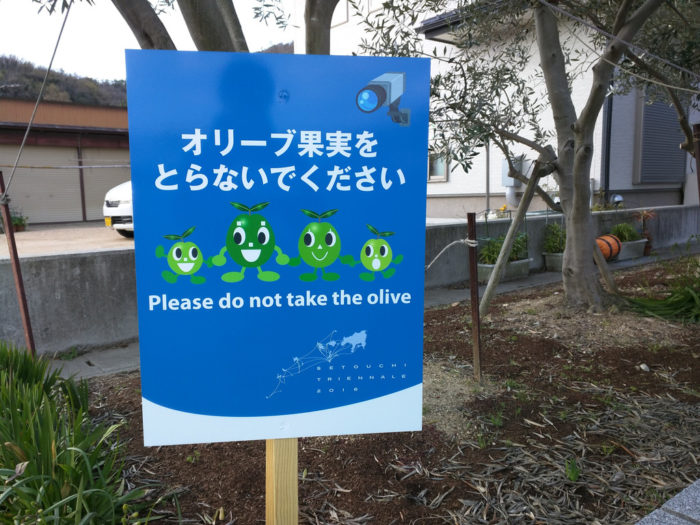
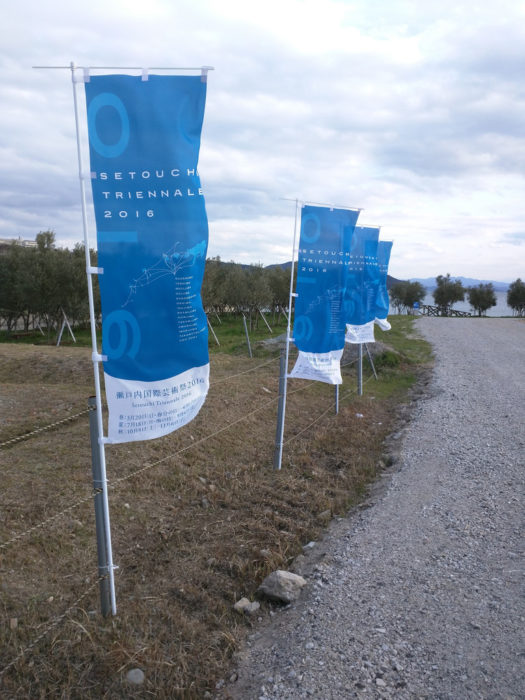
Oscar Oiwa’s island was one that I really wanted to see. If I go, maybe I’ll make an effort to visit Shodoshima.
Art No Show Terminal was pretty cool. Looks like I’d have as much fun as the little one.
Dream of Olive looks nice. Seems like the interior is more interesting this year, only because it seems more symmetrical. I see what you mean by being less impressed by the exterior though.
Still looks like a fun time though. Very jealous.
Yes, Oiwa Island 2 is just so awesome. You can’t imagine how happy I was to be able to see it again, especially after that frustrating experience on Ibukijima three years ago.
And yes, the interior of Dream of Olive is more interesting than the exterior this year. I love the interior, but what I really loved about the previous two houses was how they fit in the landscape. This home just doesn’t have the same “wow effect” when you see it from the distance.